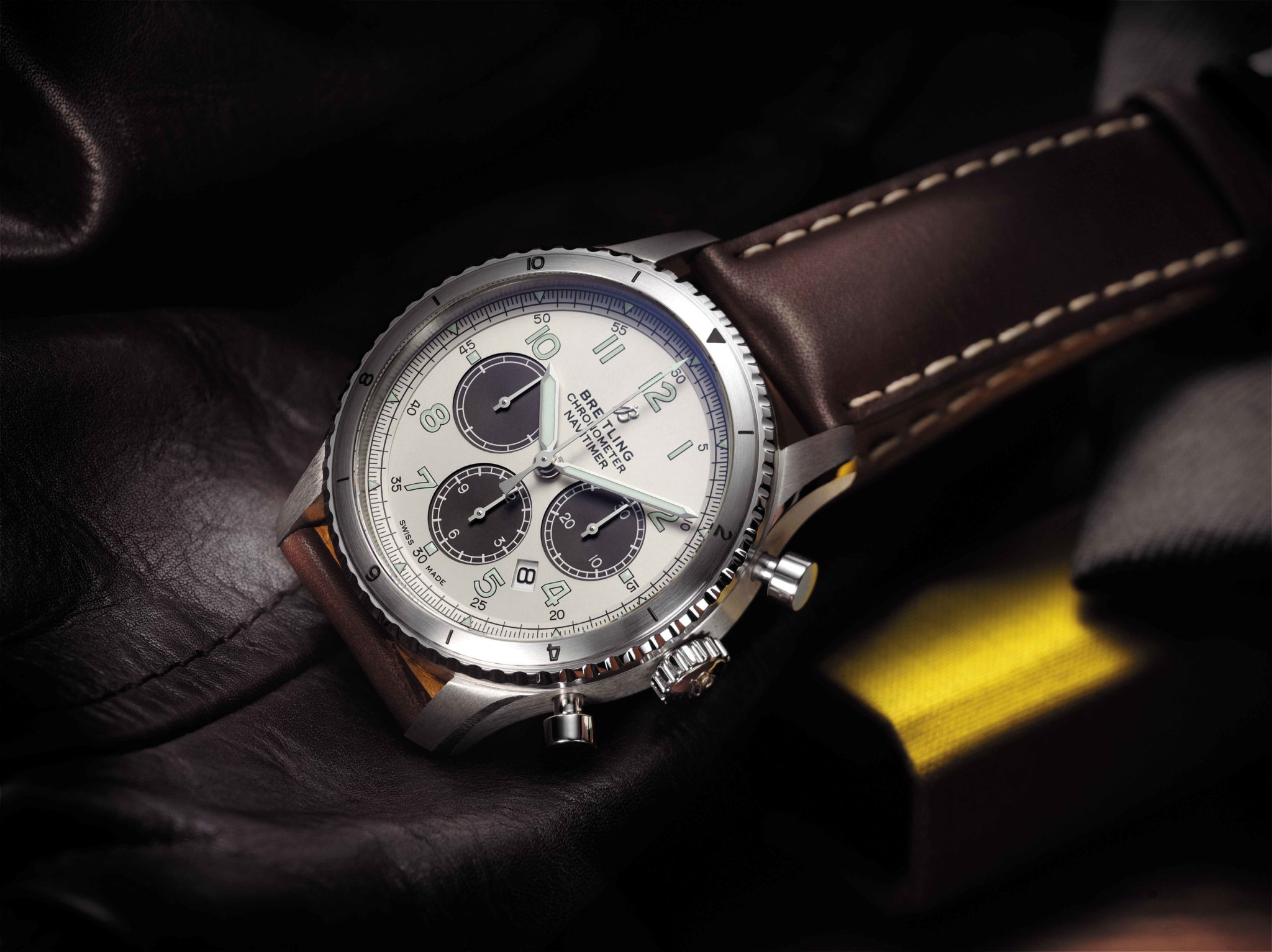In 2013, when Mr Porter placed a selection of Bremont watches on its men’s fashion ecommerce site, few people paid attention. The Swiss watchmaking industry was paranoid at the time that selling online would tarnish its luxury image and Mr Porter was hardly a household name. Five years on and Mr Porter is owned by Richemont, the world’s biggest watch business that also bought British pre-owned watch retail business Watchfinder this year. The Swiss have woken up to ecommerce and Mr Porter finds itself with a seat at the top table, as WatchPro’s Rob Corder discovered in conversation with its managing director Toby Bateman.
It is important to state up front that Mr Porter’s watch business is not large. It is not challenging Aurum Holdings, Signet, Bucherer or Beaverbrooks. It is not even the biggest ecommerce site for watches owned by Richemont. Watchfinder, with sales of around £120 million in the past year, takes that honour.
But Mr Porter is influential, particularly with under-40s customers that luxury watchmakers are desperate to reach. Its website welcomed 4.3 million visitors world-wide last month, according to web traffic analysis service Similarweb, with around 650,000 visitors from the UK. To put that in context, Watchshop.com’s world-wide audience is 1.85 million, according to the comparison service.
“To be honest it is pretty small at the moment,” Toby Bateman, managing director of Mr Porter, tells WatchPro when we ask for facts and figures on the company’s performance. “We are still developing as an authority in the category. I am very realistic about that and I do not pretend to the press or the brands that we are anything else. But it is growing very fast. We do not give out specific figures but 2017 grew significantly over 2016, and 2018 is predicted to grow at least at the same speed. Our forecasts for the next 3-5 years are for that revenue growth rate to accelerate. It will grow as our brand mix grows, as our option mix grows, as our content credibility grows, it will go in that direction,” he assures.
Content is key to Mr Porter. The business recognised earlier than most that the line between publishing, particularly digital media, and retail was becoming blurred. Shoppers are increasingly happy to take fashion advice from retailers like Mr Porter and its parent organisation Net-A-Porter. Both businesses have lively publishing divisions producing traditional glossy magazines, newspapers and supplements for their customers along with prodigious volumes of articles for distribution across websites and social media.
Last month Mr Porter announced the launch of The Luxury Watch Guide, which pulls together all watch articles into a structured section of the website. The business provides a similar service for fashion, but Mr Bateman believes its watch customers need a distinctly different approach, not least because new fashion comes along every day, but the watch industry launches the vast majority of its products at two exhibitions in Q1.

“We figured out that we would have to create a space on the site that is dedicated to watches, and would allow us to change content every week, but change it around existing products. For example, if we want to write something about what to wear on vacation for the summer, we can put together an article about dive watches or watches with rubber straps that can be worn at the pool. What that means is we can create articles that are absolutely right for the time of year, and appear to be new, but are not necessarily talking about new products. This approach means there are hundreds of opportunities for fresh articles,” he explains.
Mr Porter’s customers also want more considered and deeper articles about watches than they do about fashion. “They want more history about the brands, information about the watches and where they fit than we would do in the fashion world. Fashion customers are interested in the history of fashion brands, and we do occasionally tell those stories, but they don’t necessarily need to be reminded of those stories every time they buy a jacket or a pair of shoes. With watches, we create much richer brand environments. For each of our brands we have an extended history section and we give a top line point of view about which watch brands to go for if you looking for a certain style. We explain all the collections and show the latest styles and limited editions,” describes Mr Bateman.
Although the boss admits that Mr Porter’s watch business is “pretty small”, he also says it is of greater strategic importance than its turnover suggests. A proportion of the business’s customers discover the site when they are searching for information on a certain watch brand or style. Others already know Mr Porter’s fashion offering, and are nudged towards buying a watch when it is suggested as an accessory to a banging jacket.
“There are a number of strategic reasons why we decided a few years ago that we wanted to get into the fine watch business,” Mr Bateman recalls. “First, watches are part of a man’s outfit and we felt we were missing a vital component by not talking about them. Secondly, we realised that there are a lot of guys out there who have the means to shop and who are interested in decent watches, but do not consider themselves to be fashion guys. That is a market, which you might refer to as regular blokes, who we weren’t really reaching through our core subject of fashion.
“The watch category allows us to create content so we can work with publishing partners and affiliate partners to drive traffic to our site through different search terms. That brings new men to Mr Porter, beginning with watches, and while they are here they see our regular content and realise that the fashion side of things is not that challenging. That effectively makes it a channel for new customer recruitment. 35% of customers that bought a fine watch from Mr Porter have been first time shoppers. That is a great figure, and it means we are bringing new men into our world who can be introduced to fashion.
“Thirdly, purely from a content perspective, the watch world is a bottomless pit of fascinating content from these historic brands. That gives us another string to create interesting and engaging content.”
So, fashion has the potential to recruit new watch customers and watches have the potential to recruit new fashion customers. That is a squeeze play that is almost unique at the luxury end of the market (although Farfetch is aiming to pull off the same trick).
Another strategic objective of Mr Porter across fashion and watches is treating all age groups the same way. “I don’t tend to use the age profile because I believe age is becoming a less relevant factor in both watch customers and fashion customers. Men in their 50s are dressing like men in their 30s. We have a broad age profile of customers at Mr Porter ranging from students through to men in their 60s. Our core customer base is around mid-30s because they spend most on clothes,” Mr Bateman reveals.
Mr Porter may not have an issue with age, but the luxury watch industry certainly does. The average Rolex owner in the UK is 68, according to a report by insurance firm HomeProtect that analysed what luxury items were listed on home insurance filings from 8000 households in 2017. Rolex is not alone, and is selling more new watches to millennials than any other luxury brand, but is part of a Swiss industry that has been aloof from the way young people think for too long.
The biggest groups — Swatch Group, Richemont and LVMH — along with the likes of Rolex and Breitling, have all adjusted their thinking in the past two years, but Mr Porter and its peers have more like a decade of experience talking to millennials in a language they understand.
“The market has changed unrecognisably in the last 24 months and I am not surprised that it has; I always believed that it would. We went through more or less the same journey with fashion. Eight years ago, before we launched the business, it was my job to travel around the world with an iPad presenting to luxury menswear brands what Mr Porter would look like and convincing them to sell to us. There was a significant reluctance to speak to us because they thought there was no way anybody would spend more than £1000 online for an item of clothing. Fortunately, we were able to convince them to give us a shot, and it has worked out,” Mr Bateman remembers.
“When we started on the path with fine watches, the reluctance was much stronger. For many it was a flat no. I was almost physically ejected from some watch stands in Basel because I mentioned the word Internet. Fast forward to this year at SIHH and on every stand I visited, I was introduced to the watchmaker’s new digital director. That is an amazingly positive thing,” he suggests.
Although attitudes have changed at the top of the luxury watch industry, there is no guarantee that sales will quickly follow. “Just because the watch industry has switched on to ecommerce in the past few years, it does not mean the effect will be immediate. It will still take time on the commercial side for the new generation of clients that the brands want to reach, and which is why they are embracing ecommerce,” Mr Bateman believes.

It is not just the way millennials shop that could challenge today’s biggest watchmakers, the brands themselves might be less attractive to younger consumers. “It is no longer about how expensive a watch is, but more about how interesting the watch is. The younger customer is moving away from that. Every watch brand will tell you they are after the millennial customer, but that will take time. The millennial consumer, more than any other type of customer, is very careful about how they spend their money. They are going to want to invest in something that they know will last and is an expression of their personality rather than just a status symbol,” Mr Bateman suggests.
Mr Porter believes it is already positioned in a space in the market, and with a service, that customers are coming towards. It also knows a great deal about the desires and behaviour of those customers. “They are more online than they are offline; the data that we have tells us that 65% of our customers’ luxury shopping is done online. I talk about this a lot to the brands because they want to reach younger customers and feel that online is the way to get to them. That is true, but our customers are older than that and are still doing most of their shopping online because it fits in with their lifestyle,” Mr Bateman reveals.
There is no shortage of watch brands that now want to work with Mr Porter. The business added nine brands last year, and is now up to 16 on the site, but Mr Bateman wants far more. “We will continue to recruit more and more new brands to the site so the offer will get bigger and bigger. Now that we have the Luxury Watch Guide we have a platform to create more, better and more frequent content, and that will engage more people,” he suggests.
At a time when department stores like House of Fraser and Debenhams are struggling, their online equivalents are booming. Small wonder that Richemont has ensured it is a player with the acquisition of Yoox Net-A-Porter Group.
The data, the reach, the audience, the content and the unlimited shelf space for brands, make ecommerce players a clear and present threat to the old order. As the debonair and soft-spoken Mr Bateman says with a trace of menace: “I said that the business is in its infancy, and I mean that.”

